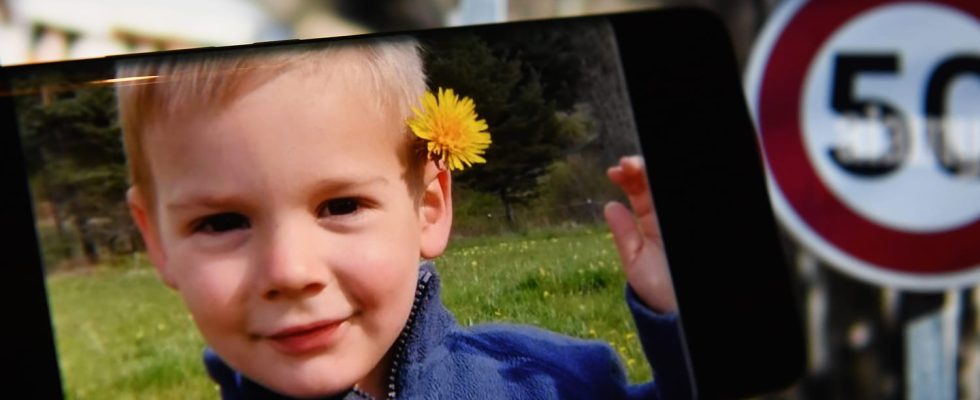After the details of the Aix-en-Provence prosecutor on Tuesday, emotion remains very strong in Haut-Vernet. Among the residents, the feeling of guilt is now emerging.
Nine months after the disappearance of Émile, 2 and a half years old, in the hamlet of Haut-Vernet, a hiker found bones on Saturday March 30. Authorities have since confirmed that they were those of the two-and-a-half-year-old child. This discovery relaunched research in the Alpes-de-Haute-Provence. And if throughout the weekend the system put in place by the investigators was widely commented on, this Tuesday, April 2, 2024, the public prosecutor of Aix-en-Provence, Jean-Luc Blachon, delivered the first information on the progress of the investigation and the various clues discovered.
Information on the cause of death of the little boy, who disappeared last July, was, of course, eagerly awaited. But the prosecutor was clear: “Between the fall, manslaughter and murder, we cannot favor any hypothesis.” And added: “These bones alone do not allow us to say what is the cause of Émile’s death.” The investigation therefore continues. The prosecutor nevertheless revealed various details, such as the discovery of the boy’s clothes not far from the bones or the first results of analyzes of his skull.
Some of little Émile’s clothes found
“About 150 meters from the site of the discovery of the skull, some clothes that Émile was wearing on the day of his disappearance were discovered yesterday (Monday), below the path: a t-shirt, his shoes, and pants. None other effect, no other bones were found. The clothes were sent to the IRCGN for analyses. We do not have the partial results of the analyses,” indicated the public prosecutor.
“The first analyzes of the skull revealed small cracks and small post-mortem fractures. No antemortem trauma was observed. The skull shows bite marks probably caused by animals. A maxilla is missing. The appearance of the bones and deposits allows us to assert that they were not buried, but exposed to the elements for a long time. Analyzes are continuing to determine whether they may have encountered different biotopes. His bones alone do not allow us to say what is the cause of Emile Soleil’s death,” continued Jean-Luc Blachon.
“The investigation will continue with the same intensity. The searches are not finished. They will probably continue tomorrow (Wednesday). Between the fall of the child, the manslaughter and the murder, we still cannot favor a hypothesis. I know it’s not satisfactory,” he concluded. The bones were discovered on March 30, 2024 between 12 p.m. and 2 p.m. on a path that a walker remembered having taken a month before. She was able to precisely indicate its location to investigators: the skull was placed on the ground. “In summer, this is a very vegetated area” indicates the public prosecutor. A place that can be reached in around 25 minutes on foot from the bottom of the village.
“I would feel guilty for not having found him”
The details provided by the prosecutor did not really appease the inhabitants of Haut-Vernet, especially those who actively participated in the research. As investigations resume, some share their state of mind. “It’s good that there are still people on the ground as long as the truth is not known about this story,” reacted a resident to TF1. Another adds, regarding the place where the child’s skull was found: “We combed so many places that I find it hard to believe that we could have missed this place . If it really was an accident, I would feel guilty for not having found him.”
“Long and complex” searches
Since Monday, the gendarmerie has ensured that “the best experts” are working on the investigations. Anthropologists, drone operators, 3D analysts… All means are put in place to try to advance the investigation. On Monday, around a hundred investigators and search dogs were already mobilized in Haut-Vernet to get to the bottom of the discovery of little Émile’s bones. The unfavorable weather of recent days greatly complicates the task of experts, particularly when it is necessary to use drones, specified the spokesperson for the gendarmerie, Marie-Laure Pezant: “We will favor a more favorable weather window , but that won’t stop you from going on the field.”
Colonel Pierre-Yves Bardy was unable to give more details regarding the duration of the research to the press this Monday, April 1. “They will last as long as they are needed. There is no time limit on investigations. As long as investigators need to work in a secure environment, the area will be off-limits.” This Monday on BFMTV, the former director of the criminal research institute of the national gendarmerie (IRCGN), François Daoust, indicated that the fact of having only found Émile’s skull would lead to “much longer research and complex.
